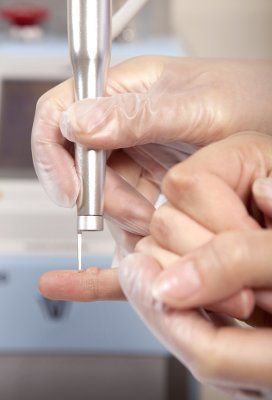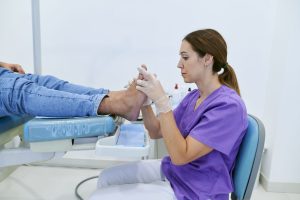Dr.A.Deepak Thirunavukkarasu MBBS, DDVL, Fellow in Medical Cosmetology
Wart Treatment in Chennai
Call Us
+91 7200148548
Email Us
cutikidz2022@gmail.com
Book Your appointment
Why Choose CutiKidz Skin Clinic for Wart Treatment in Chennai ?
Choose CutiKidz Skin Clinic for Wart Treatment in Chennai for Comprehensive and Child-Friendly Care. Our Dermatologists Specialize in Safe and Effective Solutions for Warts, Tailored Specifically for Children. With a Focus on Comfort and Positive Experiences, We Ensure Successful Treatment and Peace of Mind for Parents. Schedule a Consultation Today to Say Goodbye to Warts with Confidence
What is Wart?
A wart is a small, rough growth on the skin caused by the human papillomavirus (HPV). They are contagious and can appear anywhere on the body but are most common on hands, fingers, feet, and face. While typically harmless, they can be unsightly or uncomfortable. Treatment aims to remove warts and may include over-the-counter medications, prescription treatments, cryotherapy, laser therapy, surgical removal, or immunotherapy. Consulting a dermatologist is recommended for proper diagnosis and treatment.

Solutions for Wart

Immuno Therapy
This involves stimulating the body’s immune response to the wart, using treatments like imiquimod or antigen injections

Combination Therapy
Sometimes, a combination of treatments may be used to enhance effectiveness, such as combining topical medications with cryotherapy

Surgical Treatments
For stubborn or large warts, a dermatologist may recommend surgical excision or laser surgery to remove the wart

Over-the-counter medications
Topical treatments containing salicylic acid or cryotherapy products are available for self-treatment
Symptoms of Wart
The primary symptom of a wart is the presence of a small, rough growth on the skin. However, warts can vary in appearance and may present differently depending on their location and type. Here are common symptoms associated with warts:
Raised Bumps: Warts often appear as raised bumps on the skin’s surface. They may be small or larger in size, and their texture can range from smooth to rough.
Rough Texture: Warts typically have a rough or grainy texture, resembling a small cauliflower.
Grayish or Brownish Color: Warts may be slightly discolored compared to surrounding skin, appearing grayish, brownish, or flesh-colored.
Flat Lesions: Some warts, especially those on the hands or face, may appear flat and smooth rather than raised.
Clusters or Singular Growth: Warts can occur singly or in clusters, and they may spread to adjacent skin through scratching or contact.
Pain or Discomfort: Warts are generally painless, but they may cause discomfort, especially if located on areas of high friction or pressure, such as the soles of the feet.
Black Dots: Some warts may contain tiny black dots (known as thrombosed capillaries) within them, which are visible when the surface of the wart is scraped or trimmed.
Changes in Appearance: Warts may change in size, shape, or appearance over time, especially if left untreated or if they are subjected to trauma or irritation.

Types of Wart

Warts can vary in appearance and may manifest differently based on their location and the type of human papillomavirus (HPV) causing them. Here are common types of warts:
Common Warts (Verruca vulgaris): These warts typically appear on the hands, fingers, and around the nails. They are raised, rough-textured, and often have a cauliflower-like appearance.
Plantar Warts: These warts develop on the soles of the feet (plantar surface) and can be painful, especially when walking or standing. Plantar warts may have a flattened appearance due to pressure from standing and walking.
Flat Warts (Verruca plana): Flat warts are small, smooth, and flat-topped lesions that often appear in clusters on the face, neck, hands, or legs. They may be flesh-colored, pink, or light brown.
Filiform Warts: These warts have a long, narrow, thread-like appearance and often develop on the face, particularly around the eyes, nose, and mouth. Filiform warts may also occur on the neck or under the chin.
Genital Warts (Condyloma acuminatum): Genital warts are sexually transmitted and occur in the genital and anal areas. They can vary in size and appearance, appearing as small, flesh-colored bumps or larger, cauliflower-like growths.
Periungual Warts: These warts develop around or under the fingernails or toenails and may cause distortion or damage to the nail plate. Periungual warts can be painful and challenging to treat.
Mosaic Warts: Mosaic warts are clusters of plantar warts that grow closely together in a mosaic-like pattern on the soles of the feet.
Subungual and periungual warts: These warts grow under or around the fingernails or toenails, respectively.
Each type of wart is caused by specific strains of HPV and may require different treatment approaches. It’s essential to consult with a healthcare professional or dermatologist for proper diagnosis and management, as self-treatment or improper treatment may lead to complications or recurrence.
Causes of Wart
Warts are caused by infection with the human papillomavirus (HPV), which is a family of viruses that infect the skin and mucous membranes. There are over 100 different strains of HPV, and certain types are associated with the development of warts on the skin. The primary causes of warts include:
Direct Contact: Warts are contagious and can spread from person to person through direct skin-to-skin contact. Touching or coming into contact with the skin or surfaces that have been in contact with HPV-infected skin can transmit the virus.
Breaks in the Skin: The HPV virus can enter the body through tiny cuts, abrasions, or other breaks in the skin’s surface. Areas of moist, warm skin are particularly susceptible to HPV infection.
Weakened Immune System: Individuals with a weakened immune system, such as those with autoimmune disorders, certain medical conditions, or undergoing immunosuppressive therapy, are more susceptible to HPV infection and may be at higher risk of developing warts.
Personal Hygiene: Poor personal hygiene or habits that involve prolonged exposure to moist environments, such as wearing wet or sweaty footwear, can increase the risk of HPV transmission and the development of warts, particularly on the feet (plantar warts).
Age: Children and adolescents are more prone to developing warts than adults, likely due to their less-developed immune systems and increased likelihood of skin-to-skin contact in communal settings like schools and daycare centers.
Genetic Predisposition: Some individuals may have a genetic predisposition to developing warts, making them more susceptible to HPV infection and the development of warts on the skin.
